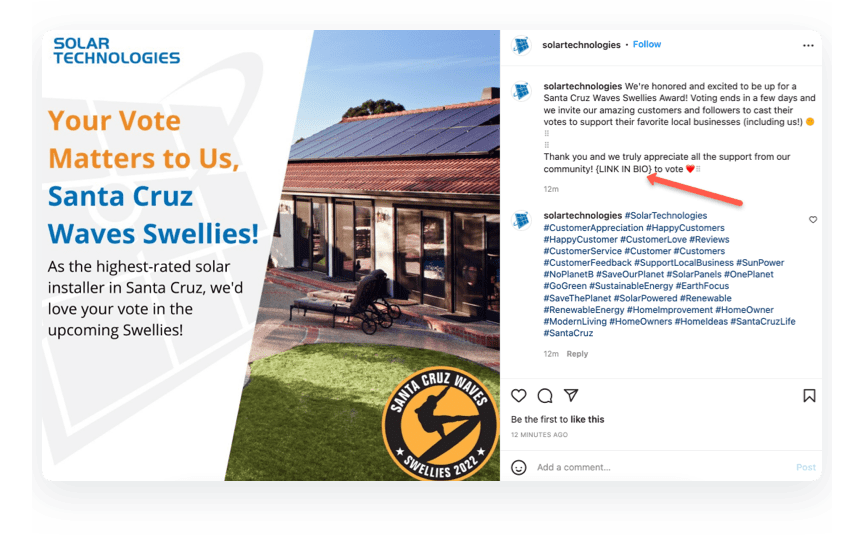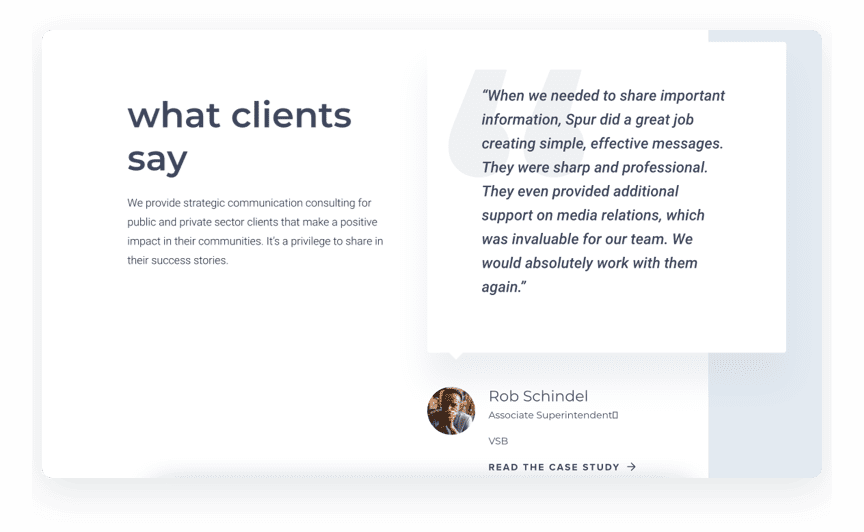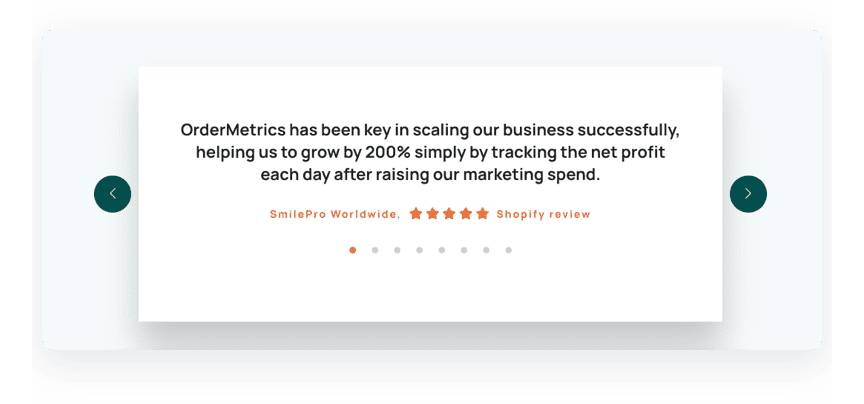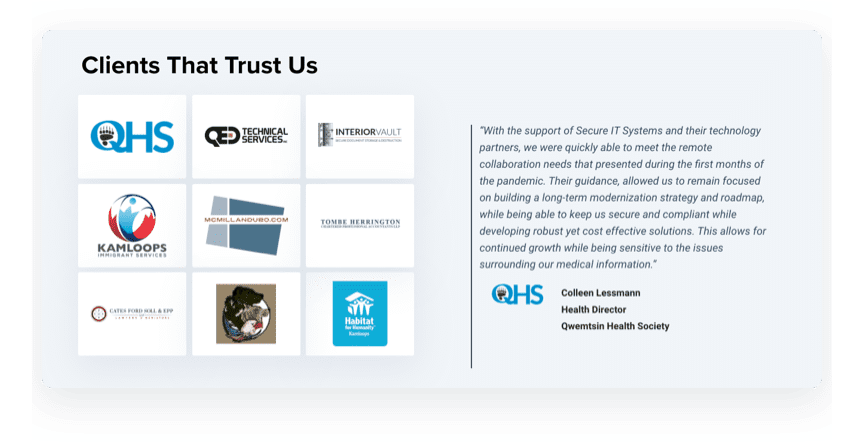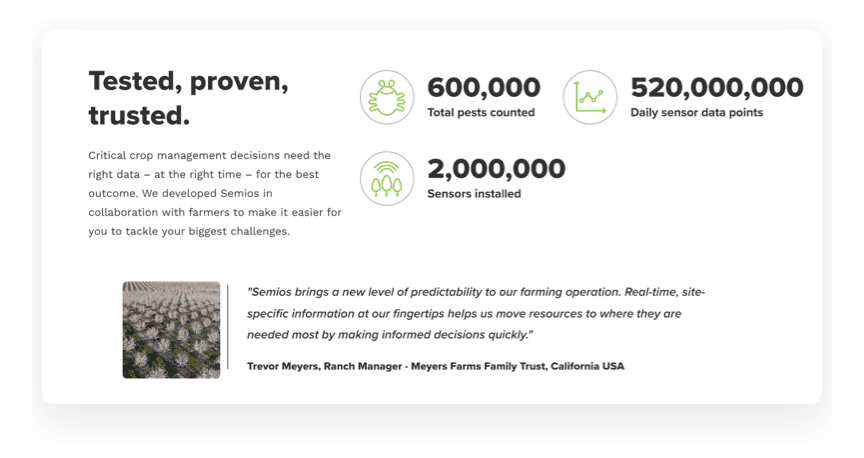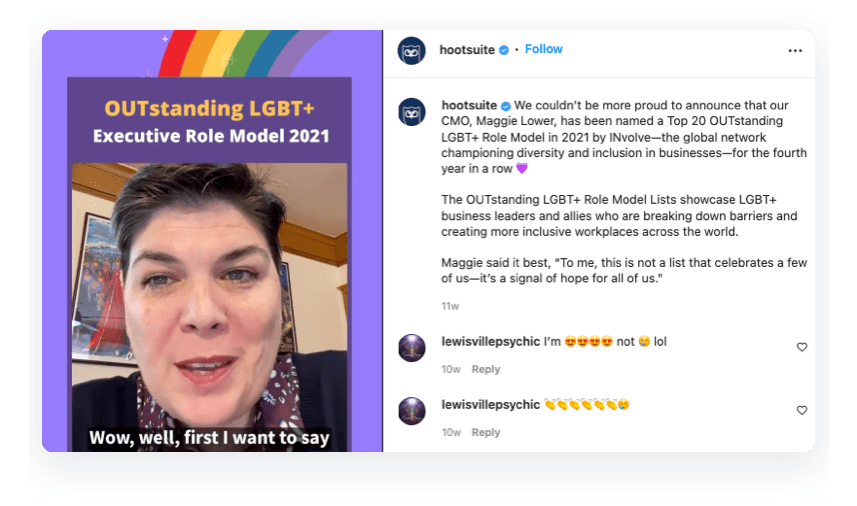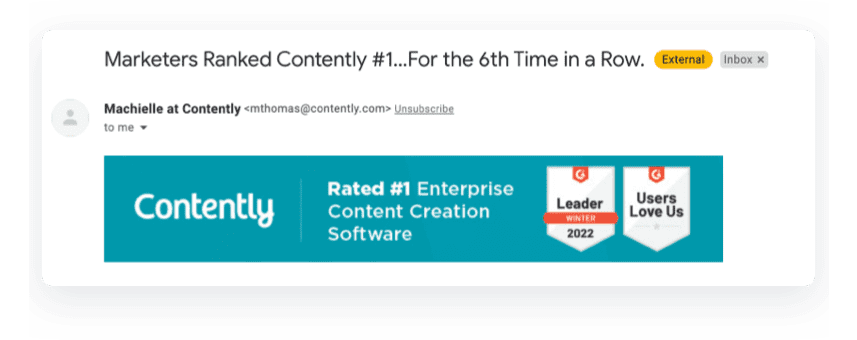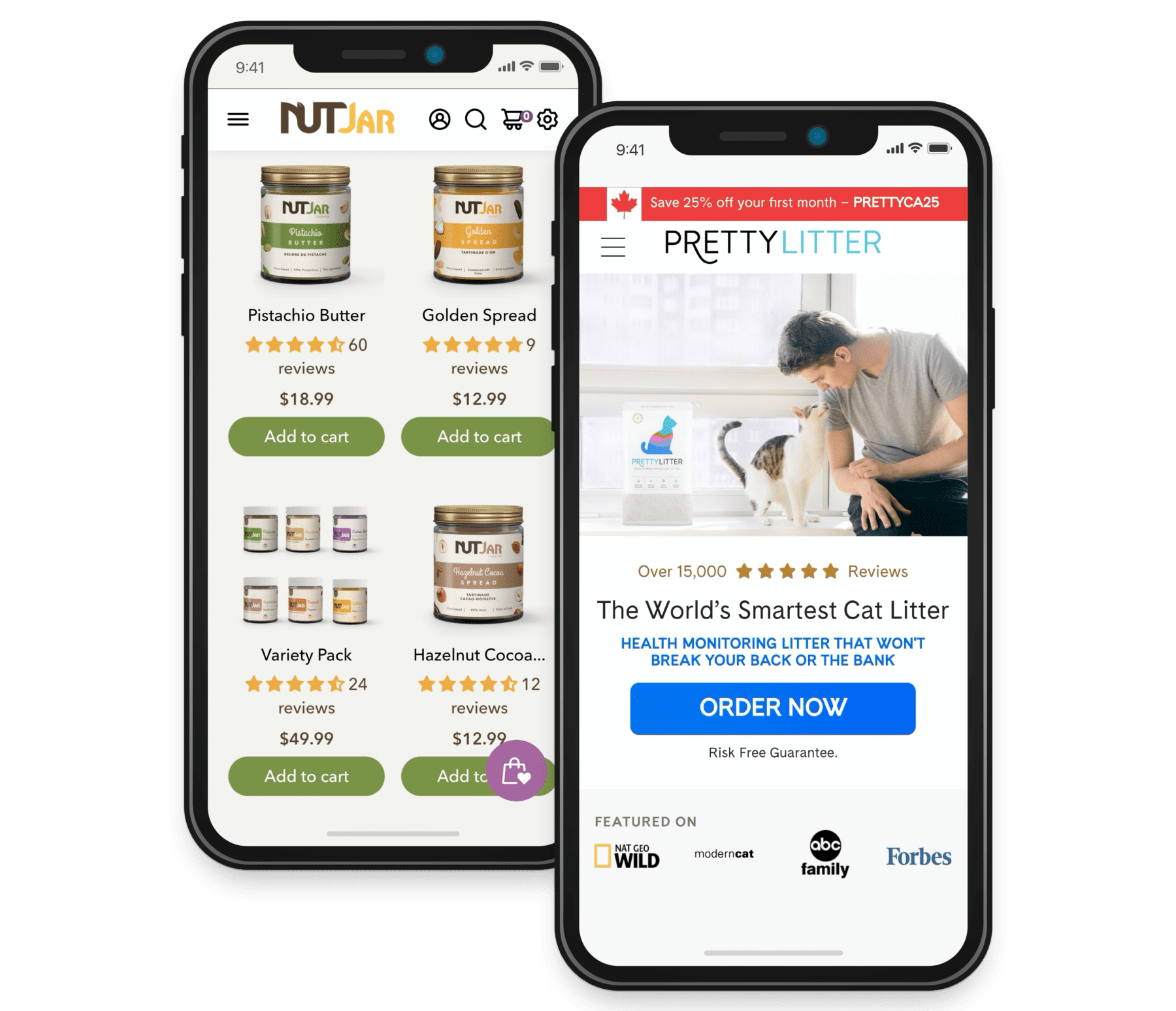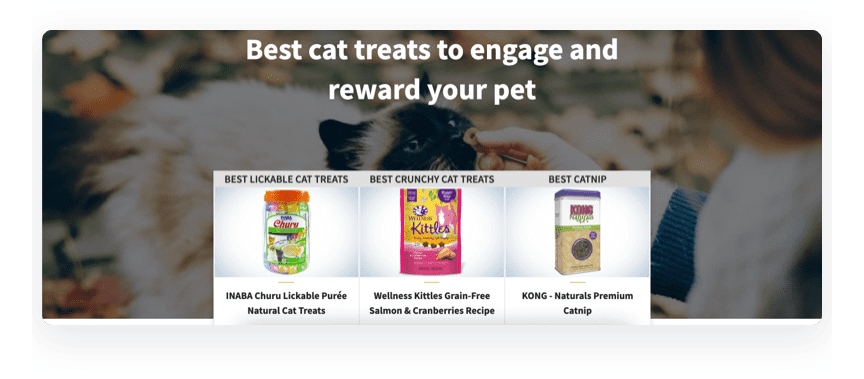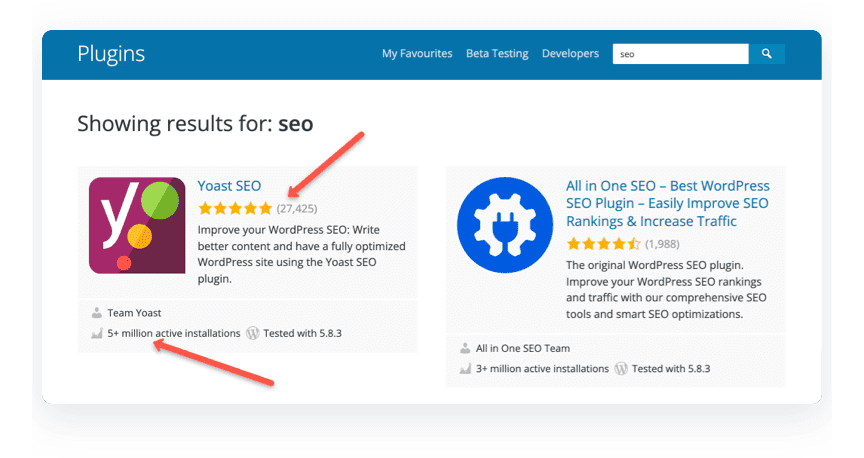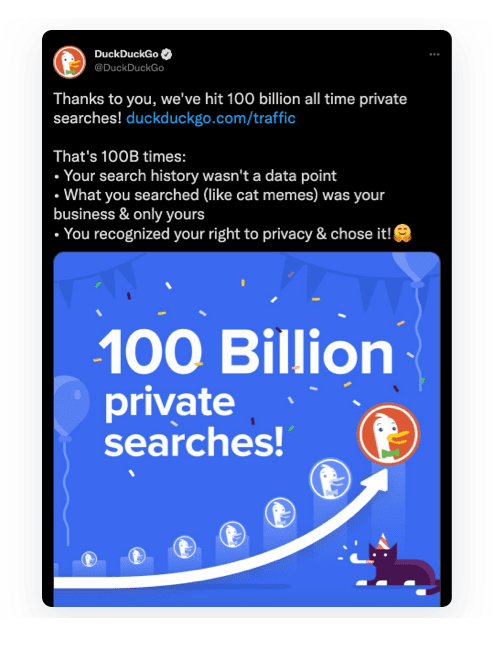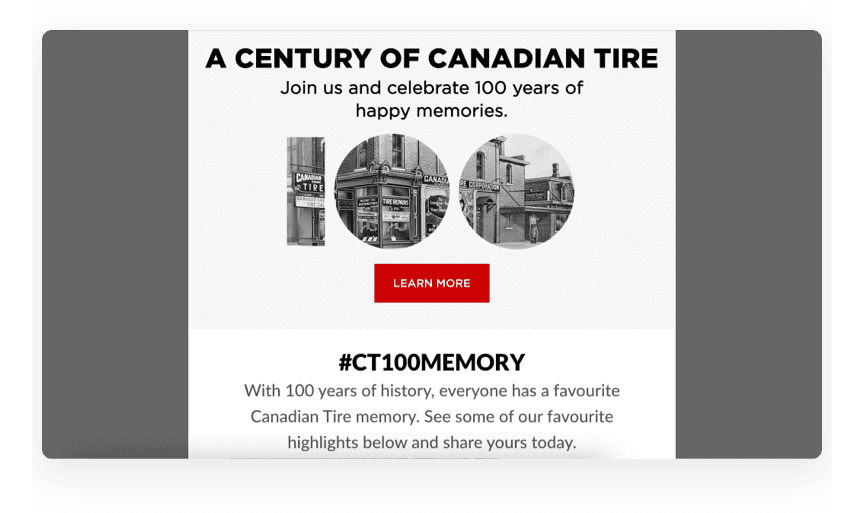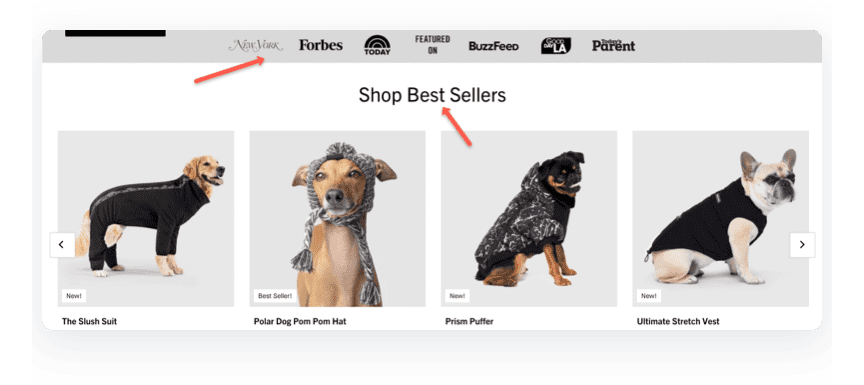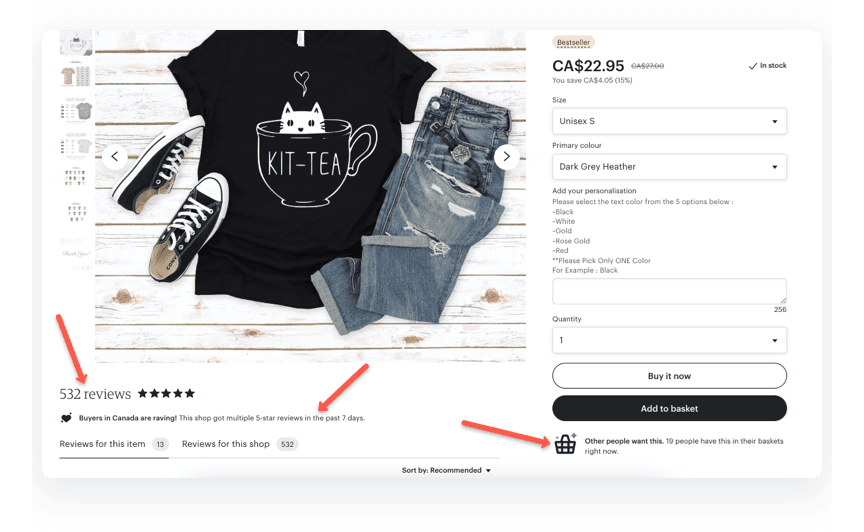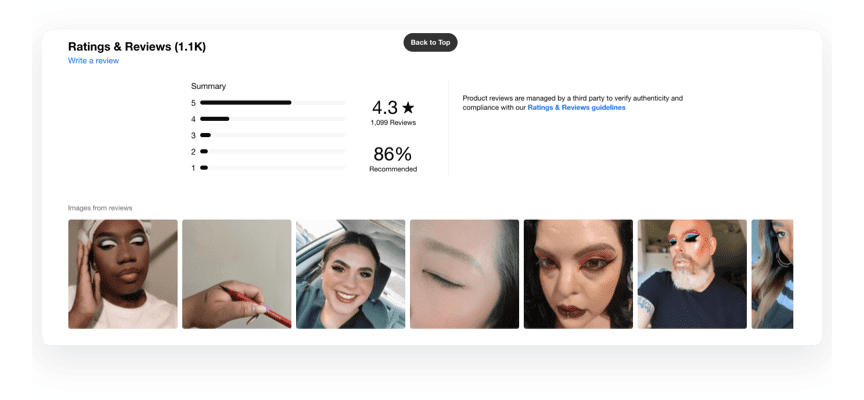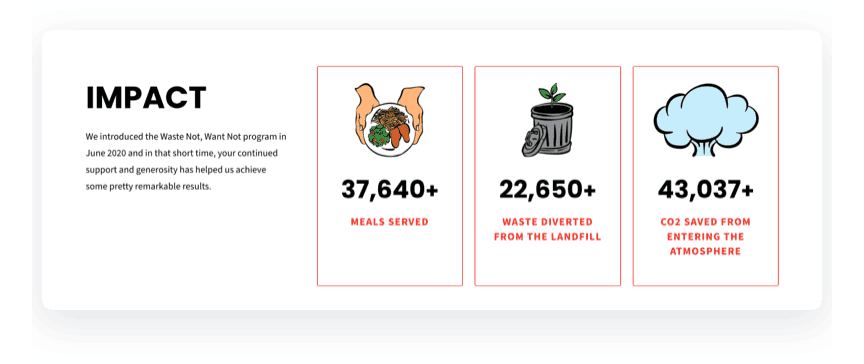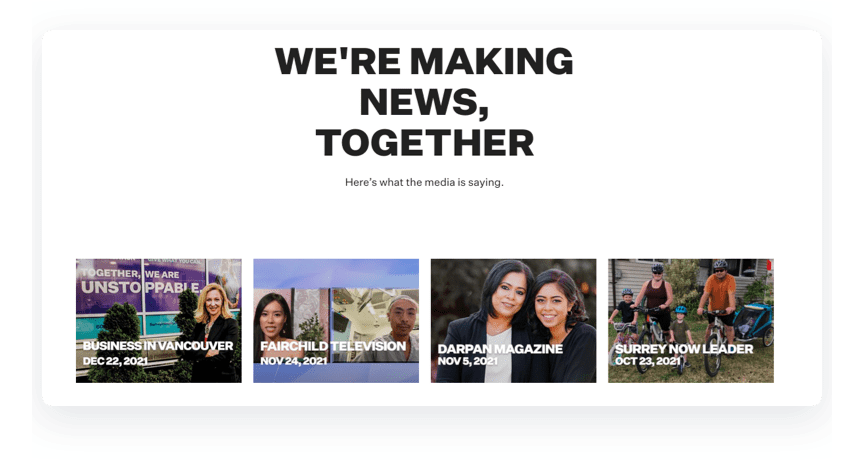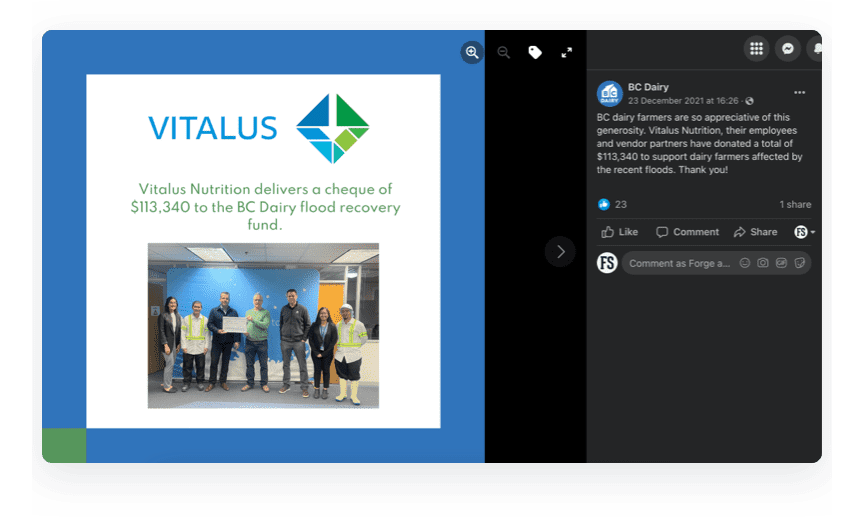Marketing any organization puts you in a weird position. On the one hand, you need to reach as many people as possible and get those conversions. On the other, you’re a consumer – squinting through all the suspicious claims, jargon, and content noise, trying to spot the real deal.
If only there was a helpful, genuine tactic that benefits both business and customer! Well of course there is, otherwise this blog post would be over. But now we’ve set the stage to introduce the magical method: using social proof in marketing.
Social proof is the ONLY kind of marketing content that people not only appreciate, but habitually seek out on their own.
- It’s trustworthy, because it’s based on data or content from real people outside your company
- It can provide use case examples and answer FAQs that result in purchases
- It’s informative, reassuring, and can cost absolutely nothing
Whether it’s customers, clients, or potential donors you seek, using social proof is the most authentic way to help people understand that what you have is exactly what they need.
We’ll dig into what social proof actually is, tips on how to build social proof, and examples of social proof in marketing for B2B, B2C, and non-profits – including where to use social proof on your website and marketing channels. This guide is a doozy!
What does social proof mean?
Social proof is the human instinct to be influenced by, and to copy, the actions of others.
The phrase was coined in 1984 by American psychologist Robert Cialdini. Its origins are about herd behaviour, conformity, and compliance, and our deep-rooted belief that if we’re a bit unsure of what to do and everybody else is doing a thing, then that’s what we should do, too.
That all sounds kind of gross and manipulative, but I promise that’s not what we’re talking about here. There are many honest, legitimate uses of social proof in marketing, which I recommend to clients all the time.
What is social proof in marketing?
As long as there has been print media and radio, businesses have attempted to use social proof in ads by claiming that “everybody” was wearing that saucy new brassiere or smoking those tasty cigarettes. But the only means to actually find out what everybody thought was to read consumer magazines, call your way through your Rolodex, or ask everybody at your next barbecue.
Now we have an instant, endless supply of social proof at our fingertips. We can send group messages to gather opinions, post to online communities, read Google and Yelp reviews, access case studies, hear expert reviews on podcasts or videos, read the comments on social media… it’s everywhere!
Check out these sweet stats about how well social proof works:
- The average person reads 10+ online reviews before making a purchase (source)
- Displaying partner or client logos can increase B2B conversions by as much as 400% (source)
- 88% of buyers consider reviews just as trustworthy as recommendations from friends or family (source)
Plus, Google Business Profile reviews are a critical piece of local SEO, directly impacting how a local business or organization ranks.
The best part about all this modern social proof is that unlike those old advertising claims, it’s 100% legit. People now expect to be asked to share their opinions.
And when you elevate your social proof, you’re not treating your audience like a sea of lemmings. You’re actually empowering them to research your company, products, or impact through the experiences of others, and to draw their own conclusions.
Sure, using social proof still taps into the reader’s instinct to trust the opinions of a larger group. And you’re guiding them to the group’s consensus by strategically displaying it. But the fact remains that you earned those favourable opinions!
(Unless, of course, you pay people to write fake reviews, or outright lie and fabricate social proof, which is so wrong.)
How to Build Social Proof for Your Business
Most businesses that have been around for five or more years have accumulated at least some social proof, somewhere.
Newer organizations, however, might yet not have any data or reviews. Some industries might not be legally or morally able to share the most convincing facts in testimonials or success stories. It’s also possible that your company just never tracked any data before.
Whatever your situation, you can easily start building social proof through these five popular methods.
1. Encourage Reviews and Testimonials
There are lots of ways to earn this content, so please don’t resort to getting friends, family, or employees to write fake reviews!
Here’s how to be legit about it:
- Make it quick and easy for clients to leave a company review by sending them a link to your Google Business, Yelp, or other review site
- Provide a direct method to leave product reviews, like a targeted follow-up email after purchases, a website survey, text message, or social post that links to the desired review location
- Contact satisfied clients to provide a testimonial
- If appropriate, turn reviews into a fun community by showcasing customer photo reviews on your website and social media
- Offer an incentive for honest reviews, like a free trial, early access, gated content, coupon, contest entry, or a free feature, service, or upgrade
- Contact people who leave positive comments on your social posts and ask if you can publish them as website reviews
- If appropriate for a non-profit, ask the people you’ve helped if you can interview them for a success story
2.Brand Ambassadors
A brand ambassador is someone who loves your brand, and talks about you to others. Unlike an influencer, this is usually a long-term relationship. Their recommendations lead to new business, which in turn gives you more data and more reviews to work with.
- Traditional brand ambassadors use your product or service, have values that match your organization, are well-known, and are hired to represent you. They might appear in ad campaigns and on your website, like how green construction company Nexii has a page showcasing their ambassadors.
- Customer or client brand ambassadors aren’t on the payroll, but they’re out there leaving positive reviews and comments, and telling others how happy you made them. If you have an awesome product and strong customer service, you’ll earn a loyal following of these people that actively drive referral business.
- Employee brand ambassadors are your own team members who boost your reach and reputation to their own networks. This should be totally voluntary, and can include sharing your social posts, recommending you in online comments, or encouraging people to apply for openings. You never know who they know!
3. Enter Industry Contests
From products and services to customer care, there are plenty of awards of all sizes out there. The best part is that many will also earn your website a backlink from the contest’s host site.
If you’re on a tight budget, search for free, relevant contests that result in an accolade like a logo or badge for your website and marketing. There are also paid contests, which usually have bigger prizes and pack more oomph as social proof.
And keep an eye out for local and regional awards! Encourage customers in-person or via social media to vote for you, like this Santa Cruz solar company did via Instagram. If that feels weird, brand ambassadors can take the reins on getting you nominated and wrangling votes.
4. Distribute Press Releases
Don’t wait for the press to come to you! As a former journalist I can tell you, press releases are a super helpful way for writers to quickly find interesting stories, and fill content gaps.
You can find lots of online tutorials on how to write a good press release, or if you’ve got the budget, you can partner with a PR agency. Pro tip: press releases can be repurposed into blog content, too.
5. Gather User-Generated Content
User-generated content (UGC) is especially popular in the B2C world, but that doesn’t mean B2B and non-profits can’t get some, too.
There are two main ways to get your hands on UGC: your website, and your social media. Always ask permission before sharing customer photos beyond the place you find them.
- Make it easy (and fun!) for customers to add photos of themselves in website reviews
- Create and regularly promote a branded hashtag for customers to use when they post photos and videos of your product, business, or impact
- Create and promote branded hashtags for events that you host, or events you attend where people can take photos with you
- Regularly check all brand hashtags, account tags, and mentions (this is called social listening) to look for customer content
- Incentivize UGC submissions by running contests or offering something in return for photos and videos
- Take it one step further by creating things like custom AR filters and social media challenges that customers will want to engage with
- It seems obvious, but make your location photo-worthy so it gets tagged often!
6. Use Tools
If you want juicy data, you need good marketing tools. This includes the great stuff that people want to know, like statistics, impact metrics, download totals, purchase totals, content shares, donation totals, and insights into which products are your bestsellers or running low because they’re so popular.
You can search for expert reviews of the top tools for any type of data you want, usually with free and paid options. If you’re serious about significantly improving your marketing (including building social proof), trust me when I say that the best tools are worth the cost.
28 Social Proof Examples
Some types of digital marketing work better for B2B vs. B2C and vice versa, but social proof works for EVERYBODY, across every industry and category including non-profits.
But that doesn’t mean you should just throw this content anywhere on your website or marketing channels.
These are my general tips for using social proof wisely:
- Know its Purpose: Social proof works best in the research stage, precluding a decision to convert. It can of course be used in top-of-funnel marketing, but it can be most impactful when it’s the last thing someone reads before being presented with a decision.
- Tell a Story: Weave your social proof into natural places on your website and marketing channels. It should benefit a page’s storytelling, or be a logical step in website navigation.
- Read the Room: Share social proof when and where it’s appropriate. Keep an ear to the news for any impact on how this type of content on social media will be received. Consider the probable mood of a visitor when viewing each part of your website.
- Be Strategic: Deliver social proof at the right moment, and put it where it will have the most positive influence on the reader. It should fit into the user experience like it’s exactly the information the person needed to make up their mind.
Now let’s get to the goods – examples of how to use social proof in your marketing.
B2B Marketing
B2B marketing has unique needs. Potential clients spend a significantly longer time doing research before making contact, and the more expensive your offering, the deeper that research goes.
That’s why social proof is so vital to driving B2B conversions. Let’s look at examples of how it can work.
1. Testimonials
Not much can rival the clean simplicity of the B2B testimonial. It reassures the reader that someone already did all of the homework on your business, and choosing you paid off.
Testimonials can live on a standalone page, or be part of a page like how Spur Communication has used the one above. They’re also easy to turn into graphics for social media and email marketing, requiring minimal design skills.
2. Product or Company Reviews
Everybody likes saving time in their work day. Ratings displayed next to B2B products give a quick and efficient vote of confidence to the person researching you from their desk. This is especially useful for SaaS solutions, like OrderMetrics (below).
Google reviews of your company, on the other hand, appear at the top of the search results when someone is looking into your business – and this helps drive traffic.
If you have a WordPress site, you can use a plugin to pull product or company reviews into a content block, or you can add them manually since they’re public information.
The icing on the cake is if you can get an ‘enhanced review’ like these:
- An in-depth product review, like a winning comparison to a competitor or a mention in a roundup of the best products in your category – republish this to your website and show it off on your marketing channels!
- Being featured in a roundup of the best and brightest, such as leaders or innovators (your company or someone you employ) – again, share this everywhere.
3. Client or Partner Logos
Displaying your clientele is a fantastic piece of social proof. The B2B client who sees this can feel confident that these other companies did their research, and wouldn’t have agreed to be featured on your website if they weren’t happy with the work.
You can dedicate a whole page to partner or client logos, or use them as strategic content blocks. Secure IT Systems gets bonus points for their homepage logo grid, because they made it a one-two punch with a testimonial.
4. Statistics
Numbers communicate value, and statistics are a major piece of B2B marketing. It’s great if you can show impressive numbers of clients, downloads, or purchases, or impact data like improvements or rates. Even a subtle indication of which solution or package is the most popular evokes the opinion of a group of satisfied customers.
Semios is another smart example that combines impact data with the further boost of a testimonial. There’s a pattern here, and it’s the power of B2B testimonials!
5. Milestones
Milestones come in all shapes and forms, and they’re the perfect way to show that lots of people see your business as strong, steady, and capable.
It could be a mention of how many years you’ve existed – 45% of businesses fail in the first five years, so a decade or more of growth is a serious vote of confidence. Promoting milestones can also mean featuring repeat clients, talking about an annual conference or event, or calling out that you’ve reached a big number of clients or downloads.
6. Awards
We all know that awards require judges to choose the best among a group of contenders. Displaying awards that your company or team has earned is a fantastic way to say “we’re number one!” and back it up with proof.
Awards could get a whole page or blog category of their own, like Softlanding uses. Honestly thought, they work everywhere on your website and in your marketing, including in an announcement above your homepage banner or in your footer menu. Show them off!
This is how Hootsuite shared a meaningful award win on Instagram, to demonstrate both the fact that they employ an award winner and their inclusive values.
And here’s how Contently share’s their popularity among B2B marketers as a key feature in their email campaign.
7. Content Insights
A big part of B2B marketing is CONTENT. If you’re doing a good job and your content is getting lots of traffic, turn it into social proof! Use WordPress plugins that showcase things like the number of reads, likes, shares, or plays a blog post, video, or podcast episode has. This tells others that other people thought this content was worthwhile.
8. Media Mentions
Most people have never been in the news, so it’s a natural instinct to subconsciously believe that if the press bothers to write about you, you’re a big deal.
Like long-form reviews, collecting media mentions as a blog category or a whole page on your website, or sharing them via social media, helps people take advantage of the research work others already did on your business.
They also work as a logo grid, like CI Direct Investing uses below, because just a glance at the places you’ve been featured will do the trick.
9. Niche Influencer Posts
The reason to partner with an influencer is to reach their much larger audience – hence the influence. But people who read influencer content are aware that money was exchanged, so the ‘proof’ part of that social proof can be watered down.
Niche micro-influencers, on the other hand, are the B2B sweet spot. These are your industry experts who might have a smaller audience (like 10,000 to 100,000 followers), but it’s significantly more engaged. People trust them and crave their insights and recommendations. If you get them to try a demo and comment on it or to give an honest review, that’s social proof gold.
10. Employer Reviews
In a different vein from Google Business reviews are employer reviews. We live in an age where social media makes it easy to find out how companies treat their employees, and mistreatment can quickly tarnish your reputation.
You can’t (and definitely shouldn’t!) control what your employees say about you on review sites like Glassdoor and Indeed, but always keep in mind that those reviews can inform a potential client’s decision.
B2C Marketing
The B2C space covers a ton of industries, from packaged goods and hospitality to service providers and creatives. Your audience has fewer stakeholders to consult and is quicker to spend, but they’re still doing their homework.
When we think of social proof, the examples that immediately come to mind are usually from B2C companies.
11. Reviews
Consumers want and expect to see product reviews for packaged goods, and company reviews for service providers.
- 90% of people read reviews before making a purchase
- 26% trust products with 11 to 50 reviews
- 80% check reviews of local businesses
Reviews reassure us that we’re not about to waste our hard-earned money.
Getting featured in ‘enhanced reviews’ like roundups of top products is great for B2C, too! Lots of websites even include shopping links right there in the review, like this cat treat roundup below, to create a better experience for their readers.
B2C company and service reviews can live on a standalone page if you have lots of them. But the most common use is a review right next to a product.
12. Statistics
When we’re trying to decide between two similar products, numbers have a HUGE influence on what we purchase.
The total number of reviews is an obvious piece of social proof, but there are lots of others you’ve probably seen while shopping online: the number of downloads, number of people who have bought the same item, number of active users, number of clients a business serves – the list goes on.
You can also include impact numbers relating to your company, if what you do or sell creates environmental or social improvement. All statistics make great social and email marketing content.
13. Milestones
Social proof milestones for B2C are similar to the ones I described for B2B, like how many years you’ve been in business, or how many customers you’ve served. The goal is to showcase how many people already trust you, so that more will follow suit.
Here’s an example of privacy-focused search engine DuckDuckGo using it on social media – if 100 billion searches have been done, a LOT of people must like their service:
And here’s how retailer Canadian Tire used it in their email marketing to show off how long they’ve been a household name, while encouraging UGC with a branded hashtag:
14. Awards
Who doesn’t want to own award-winning tech, get a massage from a five-time local business award winner, or feed their pet award-winning food? Like I said earlier in this post, awards imply that a group of experts picked YOU. It’s not an implied vote of confidence; it’s a literal vote. Display your awards with pride.
15. Media Mentions
Another accolade to showcase is when important people say good things about you to a large audience. The obvious is a media review, or being included in a ‘best products’ list, but it could also be somebody saying in an interview or unaffiliated social post that they love your brand.
B2C products have the potential for other exciting mentions rarely earned by B2B or non-profits, which imply whole other levels of social proof. For example, if your product is used on a popular TV show or movie, and people subconsciously think the show or the actors picked it because they love it. Or if you become the subject of a (positive) viral video or challenge.
16. Content Insights
A subset of statistics, content insights help people believe that everyone is leaning toward a particular product. In the B2C world, this might look like indicating your bestsellers, most popular content or products, items that frequently sell out, or what’s the highest rated.
Canada Pooch includes a roundup of their best sellers on the homepage, which makes you think other dog owners flock to these products. Note that they also use an ‘as seen on’ media grid to cement their awesomeness. Bestseller feature blocks also work well on main product pages and product category pages.
17. FOMO Alerts
Another subset of statistics, FOMO alerts are something we see frequently on travel booking sites and while cruising lots of eCommerce sites. You know, those little blurbs that jump out to warn of how many other people are looking at the hotel you’re considering booking, or to let you know how many other people have this item in their basket.
This type of fear-based marketing combined with social proof is particularly effective at urging a person to finish the transaction. See how Etsy (above) has the reviews prominently featured near the photo, a blurb about how many reviews were added in the last week (this seller is on the rise), and a warning about this cat shirt’s popularity.
I fully admit that even though I chose the shirt above at random to get a screenshot for this blog post, I was nearly convinced that I needed it.
18. User-Generated Content
Nothing shouts ‘social proof’ like photos of real human beings! That’s why user-generated content (UGC) is such an excellent piece of B2C marketing content – it’s real life proof your product makes people happy.
UGC allows potential customers to see themselves in the others using the product, relate to them through shared passions or demographics, and thus to believe that a positive outcome is guaranteed. Sephora (above) does a great job of making each product page into community for its customers, by showcasing real photos of people wearing the makeup.
19. Influencer Posts or Account Takeovers
B2C brands have a little more flexibility than B2B when it comes to finding ideal influencers, because there are just more available for consumer products.
This could be a post to the influencer’s audience, an Instagram collab post that appears on both accounts, or you might let an influencer take over your brand’s social media for a day, directing their own audience to come over and join in the fun.
Influencer social proof taps into both herd mentality (thousands of people commented on the post so the product must be good!) and our subconscious desire to have something in common with people we admire. Just be careful to pick influencers whose audiences would actually use your product. The recommendation has to feel believable for it to work.
Non-Profit Marketing
Marketing a non-profit is a fine art, because you’re asking people to give their money or time without getting a shiny new product or helpful service in return. You need to create an emotional connection with your cause, because that’s what you’re marketing – the feeling of doing good for something that matters.
We’ve seen firsthand how social proof can do wonders for our clients’ non-profit websites and campaigns.
20. Testimonials
As with B2B marketing, non-profits can majorly benefit from testimonials. These could be from people you’ve helped, community partners, or volunteers. They fit best anywhere on your website that you start the conversation about donations.
21. Success Stories
A success story is like a blog post about a person or family that your non-profit helped. Lots of non-profits have either a Stories page on their website like Immigrant Services Society of BC (below), or include a Stories category in their blog.
22. Organization Reviews
Google reviews are good for every kind of business and organization, because as already mentioned, they directly impact your local SEO.
If there are five non-profits in the area with similar website content and authority, the one with the most (and highest) Google reviews could appear first in the results – and we’re drawn to highly rated organizations, which includes how we give our money or time.
23. Partners, Sponsors, and Members
Showcasing your local business or government partners gives huge validation to your organization.
People will assume that these other companies did a lot of homework before choosing to give you a grant, sponsorship, or donation. It’s a sign of trustworthiness that also gives a little social proof boost to the businesses featured, like how PHS shares their partner logos in a grid (below).
If you have quite a few you can create a partners page. The North Vancouver Chamber features a large member directory, which functions like subtle name-dropping of who’s in the club to excite potential members.
24. Statistics
One of the best ways to use social proof in non-profit marketing is impact statistics. This gives people a quick, clear picture of how far your work reaches, and how capable you are. That goes a long way to encourage donations.
A non-profit Impact page can be highly convincing for potential donors, like the one used by A Better Life Foundation (above).
25. Awards
Just like in B2B and B2C marketing, awards show potential donors or volunteers that a panel of judges decided you were most deserving. Your organization does the best work, and it says so right on this accolade.
26. Milestones
Non-profits have lots of options when it comes to milestones as social proof.
Some examples are indicating on your website or social bios how many years you’ve been providing service, success that’s led to expansions into new regions, reaching enough funding to make a major impact, achieving a target number of monthly donors, or reaching a campaign goal.
27. Media mentions
If you’ve got the attention of the media on your organization, you should absolutely share it! This doesn’t just work for businesses – it can be especially powerful social proof for non-profits.
I can’t even tell you how many times we’ve seen clients receive donations directly from links in articles that struck a reader right in the feels. Sometimes these articles aren’t even new, they’re older content that was newly discovered by someone who cares about that issue.
Round them up on a page, or make them a blog category that doubles as a featured content block on your Impact page like Surrey Hospitals Foundation has done on their thorough Impact page (below).
28. Thank You Posts
It seems like a no-brainer, but celebrating your donors is a lovely way to encourage even more donations.
A person scrolling social media just has to see themselves or their business in a donation you’ve already received, and they’ll want to get on board.
Final Thoughts
Using social proof on your website is a powerful marketing tool, as you’ve seen if you made it this far!
But getting the most impact out of it requires a solid understanding of both your target audience and user experience (UX) design. It’s a good idea to learn at least the basics of a great UX design before you start adding or moving your content.
There are also types of social proof that I didn’t get into here, either because I didn’t think of them or because I couldn’t find good examples. In the latter category is using a social feed plugin to filter UGC from a social channel onto a page or part of a page.
I hope you enjoyed my behemoth of a guide to using social proof in marketing. Good luck!


